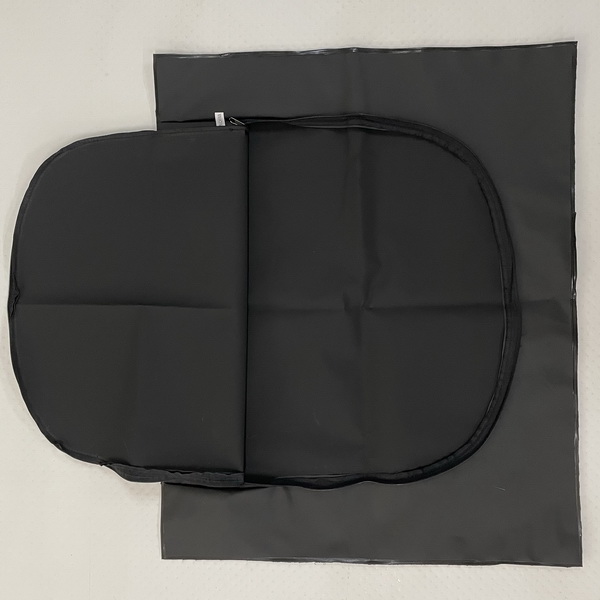Dec . 06, 2024 13:18 Back to list
Durable Rain Gear Manufacturer for Waterproof Outdoor Clothing and Accessories
The Evolution and Significance of Waterproof Rain Gear Manufacturing
In our ever-changing climate, where unpredictable weather patterns have become the norm, the need for reliable waterproof rain gear has never been more critical. The urgency of staying dry during sudden downpours has spurred the growth of specialized factories dedicated to producing high-quality waterproof rain gear. These factories combine innovative materials and cutting-edge technology to create products that not only provide protection from the elements but also offer comfort and style.
The Materials Behind the Manufacture
At the heart of waterproof rain gear is the choice of materials. Traditionally, rubber was the go-to material for rain gear due to its impermeability. However, it is heavy, less breathable, and can be quite uncomfortable for extended wear. Modern manufacturers have pivoted towards synthetic fabrics, such as Gore-Tex and nylon, which combine waterproof capabilities with breathability. This shift has been integral in creating gear that allows for moisture vapor from the inside to escape while preventing water from penetrating from the outside.
Moreover, advancements in fabric technology have led to the development of lightweight materials that don’t sacrifice durability. Factories are increasingly using laminates and coatings that enhance the water resistance of fabrics without adding bulk, making rain gear suitable for a variety of outdoor activities, from hiking to urban commuting. In addition, many manufacturers are now focusing on eco-friendly materials and processes, responding to the growing consumer demand for sustainable products.
The Manufacturing Process
The manufacturing process of waterproof rain gear involves several stages, beginning with material selection. Factories might source their fabrics from different suppliers, ensuring they meet the required waterproof standards. After selection, the materials are cut into patterns using precise techniques that reduce waste.
Sewing the garments requires specialized machinery that can stitch through waterproof materials without compromising their integrity. Sealing the seams is critical; manufacturers usually employ thermoplastic tape to cover the stitches, ensuring that no water can seep through these potential weak points. This meticulous attention to detail is what differentiates high-quality rain gear from subpar items on the market.
waterproof rain gear factory

After assembly, the garments undergo rigorous quality control testing. Factories employ water pressure tests and wear simulations to ensure that every product meets stringent waterproof standards. This testing is essential not only for customer satisfaction but also for the brand’s reputation in a highly competitive market.
Market Trends and Consumer Expectations
As consumer awareness around climate change and sustainability rises, the demand for waterproof rain gear is evolving. Today’s consumers are not just looking for functionality; they also want stylish designs that can transition from outdoor adventures to urban environments. Consequently, manufacturers are investing in research and development to create versatile products that blend technical performance with aesthetic appeal.
Moreover, customization is becoming increasingly important. Modern factories are responding to this trend by offering a range of colors, sizes, and styles, allowing customers to tailor their waterproof gear to their personal preferences. This focus on individualism is reshaping the way waterproof rain gear is marketed and sold.
Future Directions
Looking forward, the waterproof rain gear industry is likely to see further advancements as technology continues to evolve. Innovations such as smart textiles equipped with sensors that monitor temperature and moisture levels could revolutionize how consumers interact with their gear. Furthermore, the integration of advanced waterproofing treatments that are both effective and environmentally friendly will likely become a priority for future manufacturing processes.
In conclusion, the factory production of waterproof rain gear is a dynamic and evolving sector that plays a crucial role in adapting to our changing environment. With ongoing innovations in materials and manufacturing techniques, the future of waterproof rain gear looks promising, catering not only to practical needs but also aligning with the values of modern consumers regarding sustainability and style. As we navigate the unpredictable weather of the future, robust and stylish rain gear will undoubtedly become a staple in every person’s wardrobe.
-
High-Quality Body Storage Bags – Reliable Manufacturer, Factory & Exporter
NewsJul.08,2025
-
High-Quality PE Cadaver Bag for Pets Reliable Manufacturer & Supplier
NewsJul.08,2025
-
Medical Depot - Leading Medical Depot Factory, Manufacturer & Exporter
NewsJul.08,2025
-
High-Quality Work Raincoat – Reliable Manufacturer & Exporter Direct from Factory
NewsJul.07,2025
-
High-Quality Pet Dead Body Bag - Reliable Manufacturer, Factory & Exporter
NewsJul.07,2025
-
High-Quality Vinly Vest Manufacturer & Exporter Custom Vinly Vest Factory
NewsJul.06,2025





